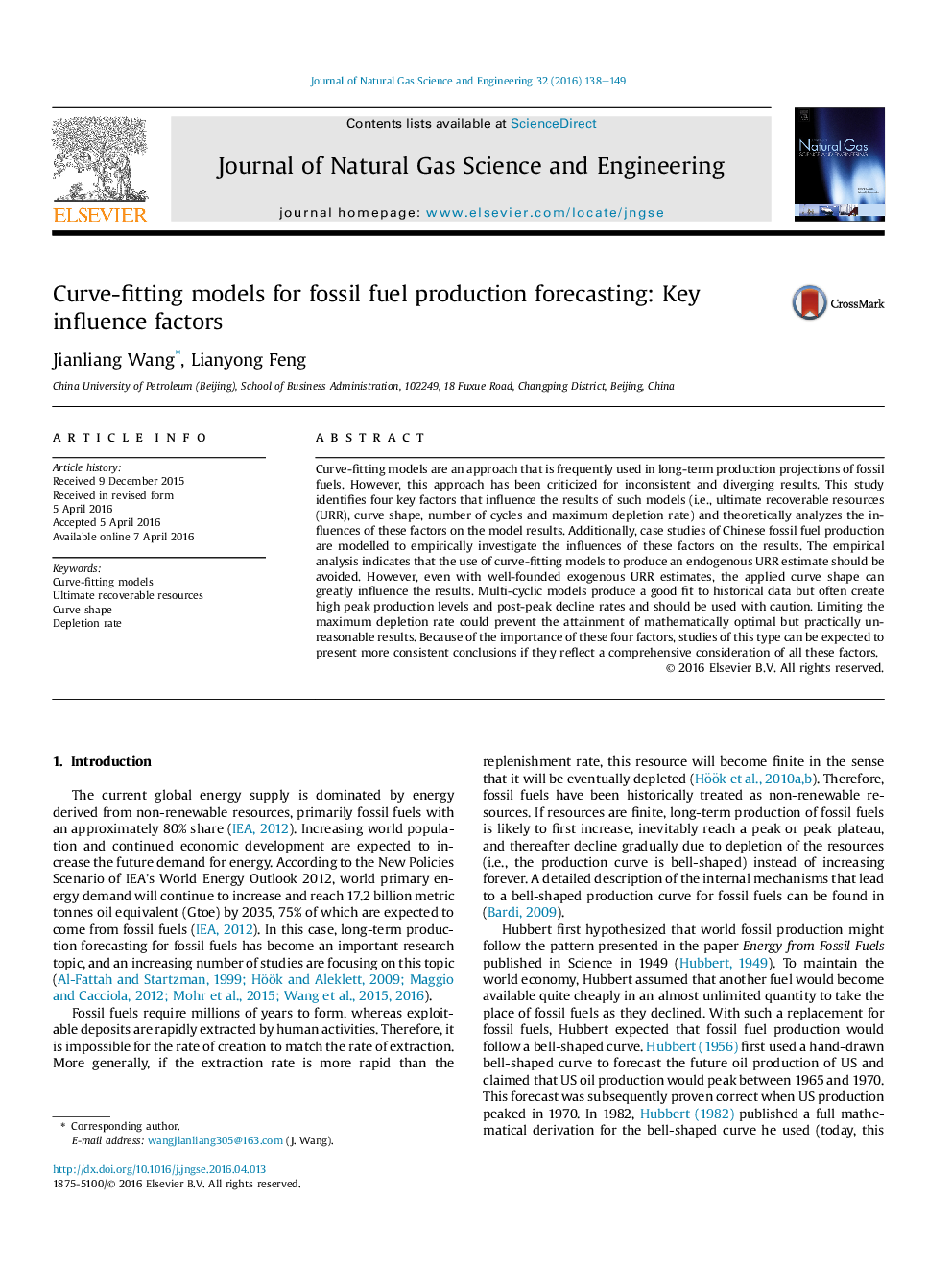| Article ID | Journal | Published Year | Pages | File Type |
|---|---|---|---|---|
| 1757218 | Journal of Natural Gas Science and Engineering | 2016 | 12 Pages |
•Four key factors and their impacts on results of curve-fitting models are analyzed.•Exogenous URR and positively skewed curve are recommended.•Caution should be given when multi-cyclic curve-fitting models are used.•Depletion rate constraint can avoid the appearance of extremely forecast results.•A proper consideration of these factors will have the benefit of yielding more consistent results.
Curve-fitting models are an approach that is frequently used in long-term production projections of fossil fuels. However, this approach has been criticized for inconsistent and diverging results. This study identifies four key factors that influence the results of such models (i.e., ultimate recoverable resources (URR), curve shape, number of cycles and maximum depletion rate) and theoretically analyzes the influences of these factors on the model results. Additionally, case studies of Chinese fossil fuel production are modelled to empirically investigate the influences of these factors on the results. The empirical analysis indicates that the use of curve-fitting models to produce an endogenous URR estimate should be avoided. However, even with well-founded exogenous URR estimates, the applied curve shape can greatly influence the results. Multi-cyclic models produce a good fit to historical data but often create high peak production levels and post-peak decline rates and should be used with caution. Limiting the maximum depletion rate could prevent the attainment of mathematically optimal but practically unreasonable results. Because of the importance of these four factors, studies of this type can be expected to present more consistent conclusions if they reflect a comprehensive consideration of all these factors.
